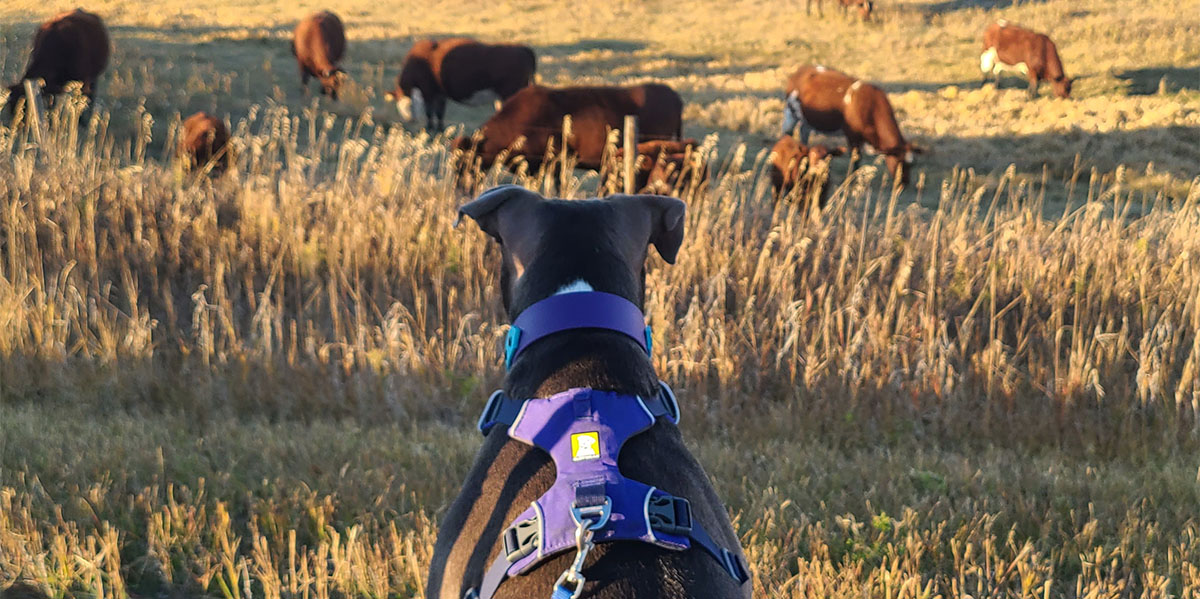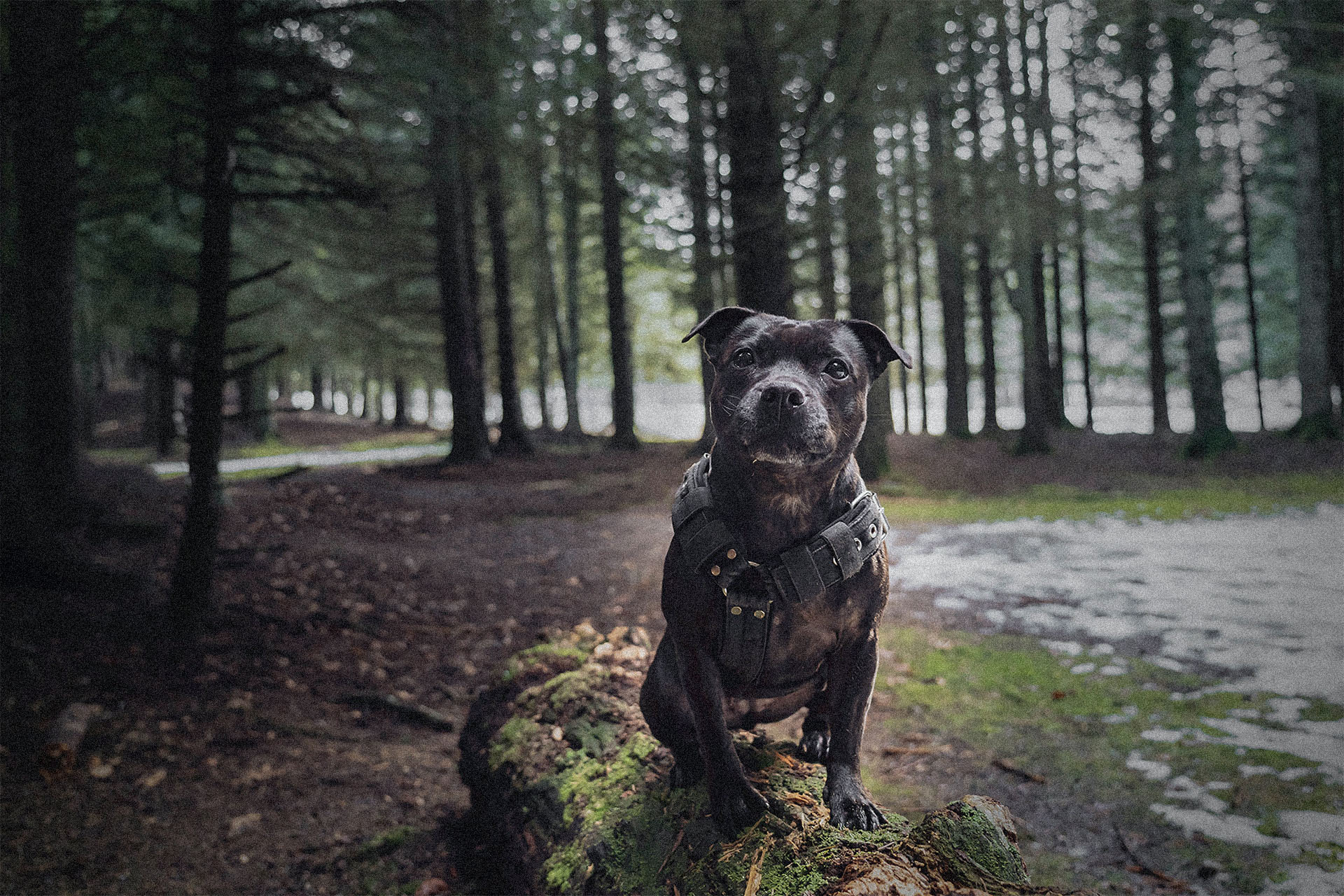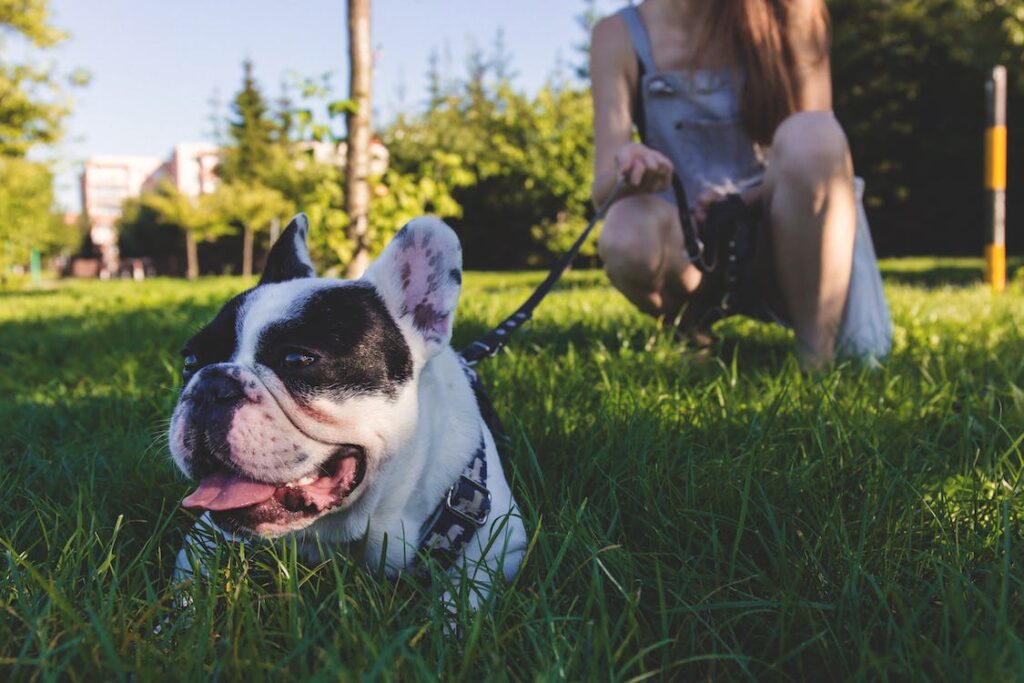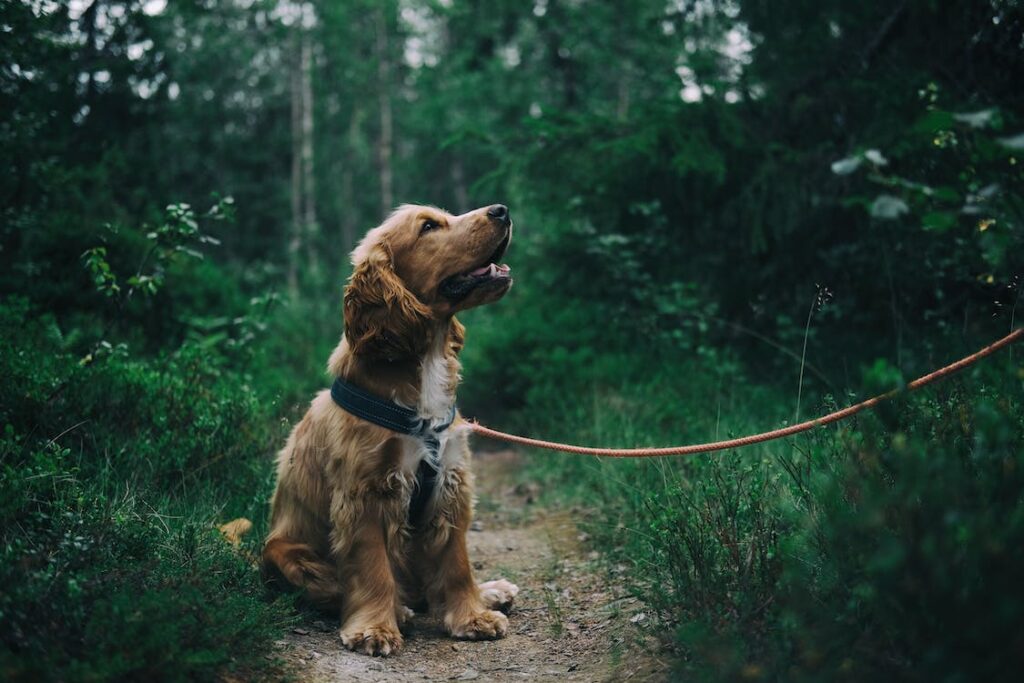Canid Coexistence
SHARE
 Fostering Harmony Between Wild and Domestic Canids
Fostering Harmony Between Wild and Domestic Canids
A Dog Guardian’s Guide For Safety
It’s crucial to leash your dog(s) when you’re in areas where wildlife is present. Dogs can cause significant harm to wildlife, and wildlife may also pose a risk to your dog. Respecting the wildlife in our communities is essential, as we have displaced them from their natural habitats. It’s our responsibility to stay informed about the wildlife in our surroundings and the potential hazards. Before entering an area, look for any warning signs or indicators of wildlife presence. While scanning the area, be vigilant for any signs of wildlife. By taking necessary precautions and giving wildlife their space, we can ensure a harmonious coexistence.
Leash Laws
Our domestic dogs are fortunate to be sheltered, fed, and cared for by us, distinguishing them from wild canids that must navigate a challenging environment to survive. However, both domestic and wild canids share a common instinct for self-preservation, often resorting to defensive behaviors when they perceive a threat.
While our dogs may be under our care, it is crucial to acknowledge that they can never be under complete control. Understanding this reality, it becomes imperative to exert efforts in managing our dogs responsibly. Wild canids, too, operate on the principle of survival, expending precious energy to avoid potential harm from domestic dogs.
By being mindful of our pets’ interactions with the environment and wildlife, we not only ensure the safety of both our dogs and the local fauna but also contribute to the overall well-being of the ecosystem. Training our dogs and instilling a sense of control is an essential aspect of responsible pet guardianship, recognizing the balance between providing freedom and managing potential risks.
Leash laws in Alberta, as well as in other provinces such as British Columbia and Ontario, serve a crucial purpose beyond ensuring the safety and respect of fellow dog guardians and their canine companions. These regulations also play a vital role in protecting wildlife. It is imperative to familiarize ourselves with the specific leash laws applicable in our local area and adhere to them diligently.
Compliance with leash laws doesn’t restrict our dogs from enjoying freedom; instead, it emphasizes the need to be conscious of where our dogs can safely experience that freedom. By respecting leash regulations, we contribute to fostering a harmonious environment for both human and animal residents, promoting the well-being of not only our pets but also the local wildlife.
Safety For Our Dogs
It is our responsibility to make sure our dogs are provided with guidance and training them to be neutral in many different environments. In order to to do this we also have to make sure their needs are met daily. Especially those with prey drive.
Mental enrichment, physical exercises, neutrality, biological outlets, recall, and leash manners are crucial to creating good canine citizens.
Doorway Manners help our dogs understand the boundaries of our home as well as the outside world. when we train them to respect a boundary that helps them maintain impulse control.
Leaving our dogs unattended in their backyard can be a risky situation.
Picking up after our dogs while we’re out with them is important as their feces attract wildlife and also spread disease.
Addressing Prey Drive
Understanding prey drive is the first step. It’s an innate instinct in carnivores, compelling them to seek, pursue, and capture prey. Different breeds exhibit varying levels of this drive; for instance, terriers, hounds, and retrievers may have stronger inclinations.
Not all breeds share the same intensity for each phase of the sequence. Terriers, bred for killing, differ from retrievers, which were designed for retrieval without necessarily biting, dissecting, or consuming. The sequence typically involves eyeing, orienting, stalking, chasing, grabbing/biting, killing, dissecting, and consuming.
The degree of fulfillment your dog experiences plays a crucial role in whether their prey drive becomes problematic in your daily life. Without sufficient and appropriate exercise, your dog might prioritize instincts over your commands. While we can’t eliminate this inherent behavior, we can learn to manage and control it.
Training Impulse Control, Training with Play, and time (you have to spend a lot of time working with them to be consistent with impulse control of all aspects.
Encounters between dogs and porcupines can result in varying reactions and behaviors. While some dogs may learn from a single quilling incident and avoid porcupines in the future, others may unfortunately experience multiple quillings. In some cases, repeated encounters can lead to a heightened interest in pursuing porcupines as prey. The progression may involve an increased intensity in pursuing these animals, with a potential for more quills to become embedded and deeper into the dog’s skin.
Nature, though captivating and beautiful, can pose unexpected challenges for our dogs. The innate instincts of dogs to explore and engage with their surroundings may inadvertently lead them into situations that can result in harm. Understanding the potential risks, such as encounters with porcupines, highlights the importance of being vigilant and proactive in managing your dog’s interactions with the environment.
In response to these challenges, there has been a growing trend towards providing dogs with controlled and safe environments for recreation. Private parks and sniff spots are gaining popularity as alternatives to open off-leash areas. These specially designed spaces allow dogs to enjoy outdoor activities within a confined and secure setting, minimizing the risks associated with encounters with wildlife. As responsible pet guardians, being aware of the potential hazards in nature and making thoughtful choices about where your dog plays can contribute to their safety and well-being.
Safety For Our Wildlife
Domesticated and wild canids can spread disease.
To prevent our dogs from spreading disease to not only other dogs but our wildlife is so important. Pick up after your dog, this includes picking up the bag and not leaving it behind.
Our dogs chasing wildlife can be dangerous for not just our dogs but wildlife as well. It causes unnecessary stress and injuries.
Be aware of your surroundings, scan your environment when you’re out with your dog so that you can make the appropriate moves to handle a situation with wildlife.
Transmission of Parasites and Disease
It is imperative to consistently pick up after our dogs, as neglecting to do so can have far-reaching consequences for both other animals and our pets. Failure to clean up after our dogs not only poses health risks to other dogs and domestic pets but also extends to wildlife. Dog feces can contain harmful bacteria and parasites that may be transmitted to other animals through direct contact or environmental contamination.
Additionally, the spread of diseases from wildlife to our dogs is a concerning potential outcome, underscoring the interconnectedness of ecosystems. By responsibly picking up after our dogs, we contribute to maintaining a healthier environment for all creatures, minimizing the risk of disease transmission and fostering a safer coexistence between domestic and wild animals.
It is essential for dog guardians to be aware that raccoons can carry distemper, posing a potential threat to the health of our dogs. To safeguard your our dogs, ensure that your dog is properly vaccinated is of utmost importance. Engaging in a conversation with your veterinarian about the specific risks in your area and your dog’s individual needs is crucial. This dialogue can provide valuable insights into the appropriate vaccines and preventive measures necessary to protect your pet from potential infections.
Furthermore, discussing the prevalence of certain diseases in your region, such as deer ticks in areas like Alberta versus Ontario, becomes significant. Titer testing and proper vaccination protocols may vary based on geographic considerations, and understanding these nuances can enhance the effectiveness of preventive measures.
In making choices for prevention, it is crucial to be mindful and well-informed.
Canine Body Language
Canine body language serves as a universal mode of communication, bridging the gap between domestic canids and their wild counterparts. Both share a rich repertoire of gestures and expressions that convey a range of emotions and intentions. Similarities in body language include subtle cues like ear position, tail carriage, and facial expressions, which can signal friendliness, fear, or aggression. Watchful eyes, raised hackles, or a tucked tail often indicate discomfort or stress in both domestic and wild canids.
Understanding these shared signals is crucial for interpreting the social dynamics and potential conflicts within canine communities. Paying attention to body language can facilitate effective communication and enhance our ability to respond appropriately, whether interacting with our domesticated companions or encountering wild canids in their natural habitats.
The Gold Standard of Dog Guardianship
The gold standard for dog guardianship entails a holistic commitment to the physical, mental, and emotional well-being of our canine companions. This involves providing a balanced and nutritious diet tailored to the dog’s specific needs, regular veterinary check-ups, and preventive healthcare measures. Adequate exercise, mental stimulation, and socialization are essential components, promoting a healthy lifestyle and preventing behavioral issues.
A gold standard guardian ensures a safe and comfortable living environment, offering shelter from the elements and a secure space for rest. Positive reinforcement-based training methods foster a strong bond, trust, and clear communication between the guardian and the dog. Responsible guardians also prioritize proper identification through microchipping and tags, promoting swift reunification in case of separation. Finally, a gold standard dog guardian practices ethical breeding choices, considers adoption as a first option, and actively participates in the broader canine community, contributing to the collective welfare of dogs on both individual and societal levels.
Prevention and Reaction
Prevention and reaction training are paramount in ensuring the safety of dogs and wildlife alike. In a comprehensive safety approach, prevention involves teaching dogs to avoid potentially dangerous situations with wildlife through commands like “leave it” or “stay.” This training emphasizes the importance of keeping a safe distance and respecting the boundaries of other creatures.
Additionally, it includes educating dog guardians on the local wildlife in their area, helping them anticipate potential encounters. On the reactive side, dogs should be trained to respond immediately to recall commands, enabling guardians to swiftly intervene in unexpected interactions. Such training not only protects the dog from potential harm but also minimizes stress on wildlife by avoiding unnecessary confrontations.
Striking a balance between prevention and reaction training fosters a harmonious coexistence between dogs and the natural world, ensuring the safety and well-being of both.
Socialization
Socialization and exposure play pivotal roles in fostering a well-rounded and adaptable canine companion within the context of the diverse wildlife that surrounds us. Exposing dogs to various environments, sights, sounds, and scents from an early age helps them build confidence and resilience. This exposure not only contributes to a more emotionally stable and socially adept dog but also aids in preventing fear-based behavioral issues.
Moreover, socialization with different animal species, including wildlife, instills a sense of tolerance and understanding. Familiarizing dogs with the sights and sounds of their natural environment can mitigate anxiety and reduce the likelihood of aggressive reactions. By encouraging positive interactions and curiosity, we not only enhance the quality of life for our dogs but also contribute to the coexistence of domesticated animals and wildlife in shared spaces, promoting harmony within our ecosystems.
Key Points
- Research and educate yourself: Learn about the wildlife species that inhabit the areas you visit.
- Follow local regulations: Be aware of any specific rules or guidelines in place for the area you’re visiting. Some parks or natural reserves may have specific leash laws or designated dog-free zones to protect wildlife.
- Stay on designated trails: Stick to marked trails and paths to minimize disturbance to wildlife and their habitats. Venturing off-trail can trample vegetation and disrupt nests or burrows.
- Dispose of waste properly: Always clean up after your dog. Pet waste left behind can introduce bacteria and contaminants into the environment, affecting the local ecosystem.
- Keep a safe distance: When you do encounter wildlife, maintain a safe distance and observe from afar. Respect their space and avoid any actions that may provoke a defensive response.
- Be mindful of nesting and breeding seasons: Take extra precautions during these periods to avoid disturbing or endangering wildlife.
For more information on coyote coexistence follow this link: Coyote Watch Canada
Lorem ipsum dolor sit amet, consectetur adipiscing elit. Ut elit tellus, luctus nec ullamcorper mattis, pulvinar dapibus leo.

How Do I Stop My Dog From Pulling On Leash?


How Do I Socialize My Puppy?
